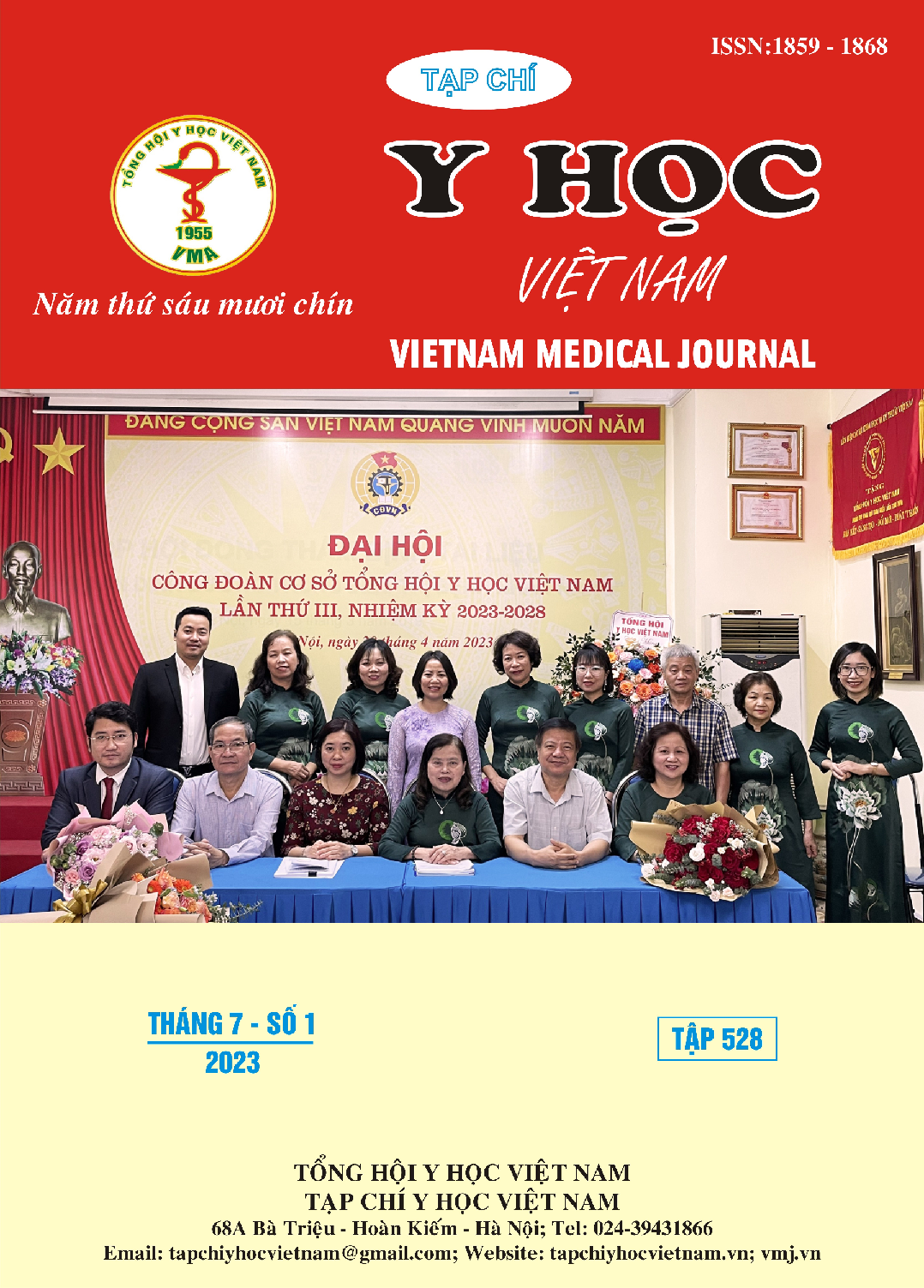CHARACTERISTICS OF UPPER UROLITHIASIS ON MULTISLICE COMPUTED TOMOGRAPHY (MSCT) IN PRE-PERCUTANEOUS LITHOTRIPSY EVALUATION
Main Article Content
Abstract
Purposes: To describe the computed tomography characteristics of upper urolithiasis on multislice computed tomography (MSCT) in pre-percutaneous lithotripsy. Material and methods: A description study was carried on 35 patients who underwent a percutaneous nephrolithotripsy at Hanoi Medical University Hospital and had multi-slices computed tomography before lithotripsy from June 2022 to February 2023. Results: There were 22 men/13 women, the mean age was 53.4 ± 12.0, the prevalence of kidney stones was mainly from 30-60 years old. The lithotripsy kidney was mainly on the right side. Stones were mainly complex location (pelvis+ calyx), all patients had nephrolithotripsy through the middle calyx, the stone size was mainly 20-30mm (accounted for 57.1%), the stone surface area was mainly <10 cm2 (accounted for 88.6%).The stone density was mainly >1000 HU (accouted for 91.4%). The fluid density in the renal calyces was mainly < 10 HU (accouted for 62.9%). Most of lithotripsy kidney still had good function (accouted for 82.9%). Conclusion: Multi-slices computed tomography provided important informations for the pre-percutaneous lithotripsy such as location, quantity, size, surface area, density of stones, influence of stones on the urinary tract as well as the associated anatomical abnormalities.
Article Details
Keywords
urolithiasis, percutaneous lithotripsy, multislice computed tomography
References
2. Smith RC, Rosenfield AT, Choe KA, et al. Acute flank pain: comparison of non-contrast-enhanced CT and intravenous urography. Radiology. 1995;194(3):789-794. doi:10.1148/ radiology.194.3.7862980
3. Tiselius HG, Andersson A. Stone burden in an average Swedish population of stone formers requiring active stone removal: how can the stone size be estimated in the clinical routine? Eur Urol. 2003; 43(3):275-281. doi:10.1016/s0302-2838 (03) 00006-x
4. Shaker H, Ismail MAA, Kamal AM, et al. Value of Computed Tomography for Predicting the Outcome After Percutaneous Nephrolithotomy. Electron Physician. 2015;7(7):1511-1514. doi: 10.19082/1511
5. Đào Đức Phin. Kết Quả Điều Trị Sỏi Thận Bán San Hô Bằng Tán Sỏi qua Da Đường Hàm Nhỏ Tại Bệnh Viện Đại Học Y Hà Nội. Luận văn chuyên khoa cấp II. Đại học Y Hà Nội;2019.
6. Hoàng Long. Kết quả tán sỏi qua da đường hầm nhỏ tư thế nằm nghiêng dưới hướng dẫn của siêu âm. Tạp chí nghiên cứu y học Trường Đại học Y Hà Nội; tập 134 tháng 10 -2020, tr100-115.
7. Bùi Trường Giang. Đánh Giá Kết Quả Tán Sỏi qua Da Đường Hầm Nhỏ Điều Trị Sỏi Thận Tại Bệnh Viện Đa Khoa Đức Giang Giai Đoạn 2017-2021. Luận văn chuyên khoa cấp II. Đại học Y Hà Nội; 2021.
8. Gücük A, Uyetürk U, Oztürk U, Kemahli E, Yildiz M, Metin A. Does the Hounsfield unit value determined by computed tomography predict the outcome of percutaneous nephrolithotomy? J Endourol. 2012;26(7):792-796. doi:10.1089/end.2011.0518


